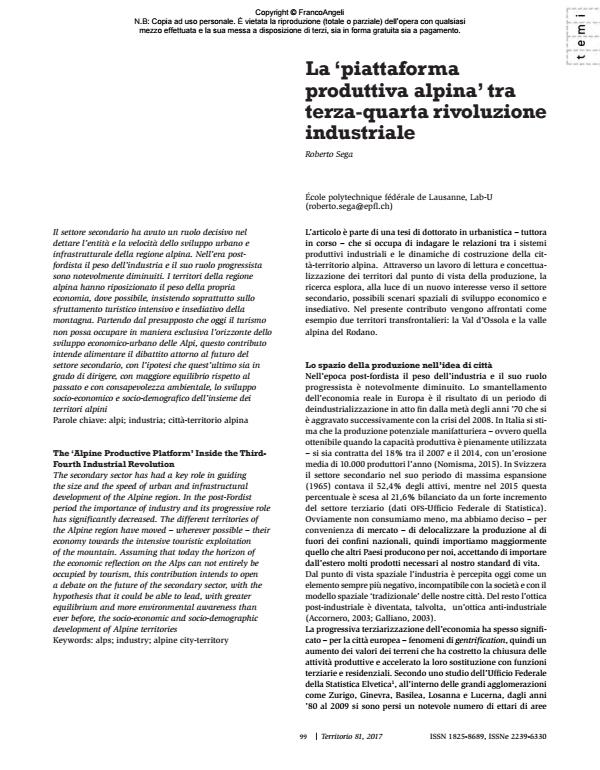The ‘Alpine Productive Platform’ Inside the Third-Fourth Industrial Revolution
Journal title TERRITORIO
Author/s Roberto Sega
Publishing Year 2017 Issue 2017/81
Language Italian Pages 6 P. 99-104 File size 1110 KB
DOI 10.3280/TR2017-081023
DOI is like a bar code for intellectual property: to have more infomation
click here
Below, you can see the article first page
If you want to buy this article in PDF format, you can do it, following the instructions to buy download credits

FrancoAngeli is member of Publishers International Linking Association, Inc (PILA), a not-for-profit association which run the CrossRef service enabling links to and from online scholarly content.
The secondary sector has had a key role in guiding the size and the speed of urban and infrastructural development of the Alpine region. In the post-Fordist period the importance of industry and its progressive role has significantly decreased. The different territories of the Alpine region have moved - wherever possible - their economy towards the intensive touristic exploitation of the mountain. Assuming that today the horizon of the economic reflection on the Alps can not entirely be occupied by tourism, this contribution intends to open a debate on the future of the secondary sector, with the hypothesis that it could be able to lead, with greater equilibrium and more environmental awareness than ever before, the socio-economic and socio-demographic development of Alpine territories
Keywords: Alps; industry; alpine city-territory
Roberto Sega, La ‘piattaforma produttiva alpina’ tra terza-quarta rivoluzione industriale in "TERRITORIO" 81/2017, pp 99-104, DOI: 10.3280/TR2017-081023